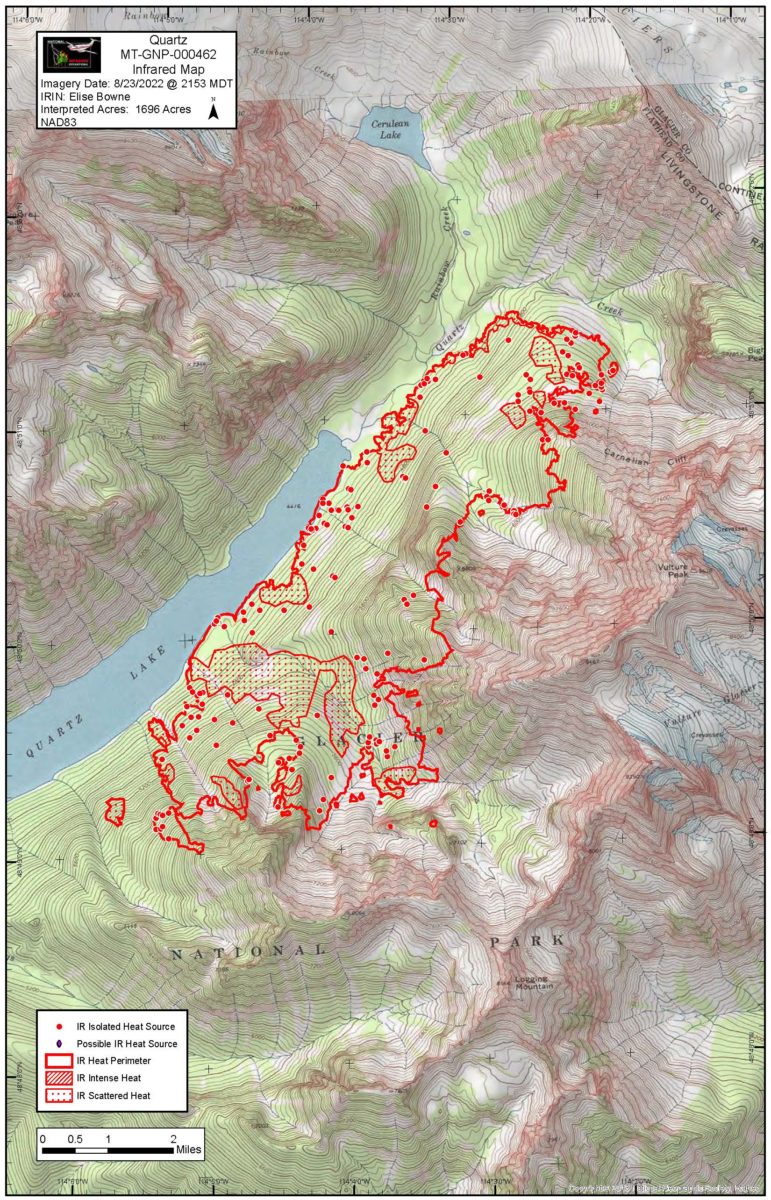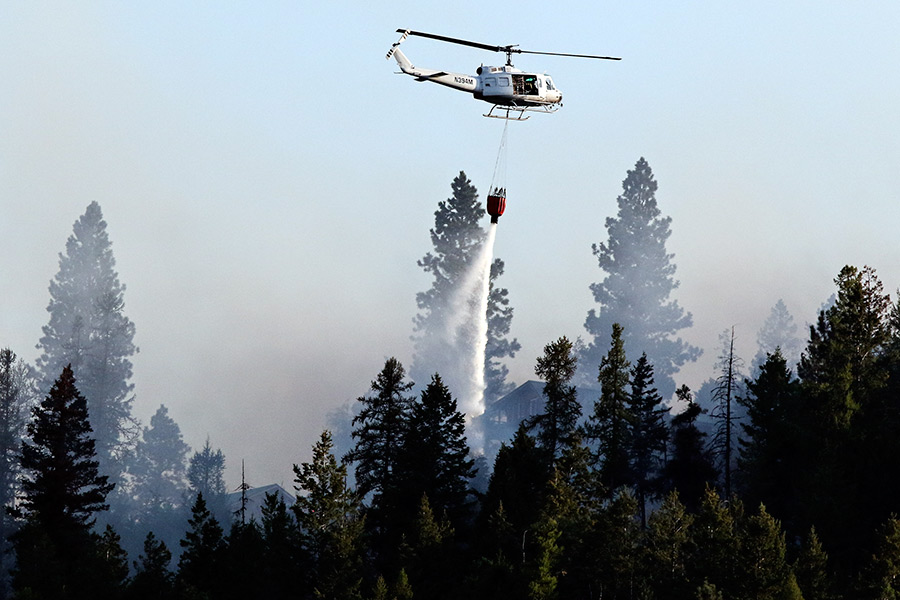Recent stormy weather has sparked several small new fires in northwest Montana, according to the state’s wildfire dashboard. The Coal Ridge Fire in the Whitefish Range, Margaret Fire in the Swan Range, Larch Hill Fire in the Bob Marshall Wilderness and the Revais 1 Fire near Dixon were all lightning caused. Only the Revais 1 Fire is currently large enough for suppression activity with 68 personnel assigned.
Throughout the region, most larger wildland fires have seen minimal growth in recent days.
The Quartz Fire in Glacier Park has increased by 18 acres in the last two days to 1,696 acres. Limited spots of intense heat were mapped on last night’s IR flight. A Wildland Fire Module arrived yesterday to relieve the unit of Glacier Park firefighters, freeing them up to contain other small blazes, including a one-acre fire on West Flattop Mountain that was detected and suppressed on Monday. Trail and campsite closures around Quartz Lake remain in effect. This includes the Quartz Lake Loop trails starting from south of Bowman Lake, as well as the Quartz Lake and Lower Quartz Lake Wilderness Campgrounds.

The Garceau Fire remains at 6,725 acres and is considered more than halfway contained. Just to the north, the Sullivan Fire, a suspected human-caused blaze detected on Aug. 22 was mapped at 42 acres. The fire is 10% contained and the local firefighting crews are aided by air support to secure the perimeter. There remain no evacuation orders or threatened structures in the area.
In the Bob Marshall Wilderness, the Cannon Fire remains active and closures in the area are in effect. The 1,384-acre fire has seen minimal growth and received rain over the weekend, helping slow the spread.
Up north, the Weasel Fire straddling the U.S.-Canada border is just over 5,000 acres, roughly split in half between the countries. Fire activity is mainly seen on the Canadian side where crews have set up a new camp near the fire line to reduce drive times and minimize fatigue for those working on the incident. The fire is mostly active in the Couldrey drainage and is predominantly “low vigour surface fire with open flame and an unorganized flame front … with occasional tree candling.” The fire is expected to spread further into the Canadian Flathead area.
